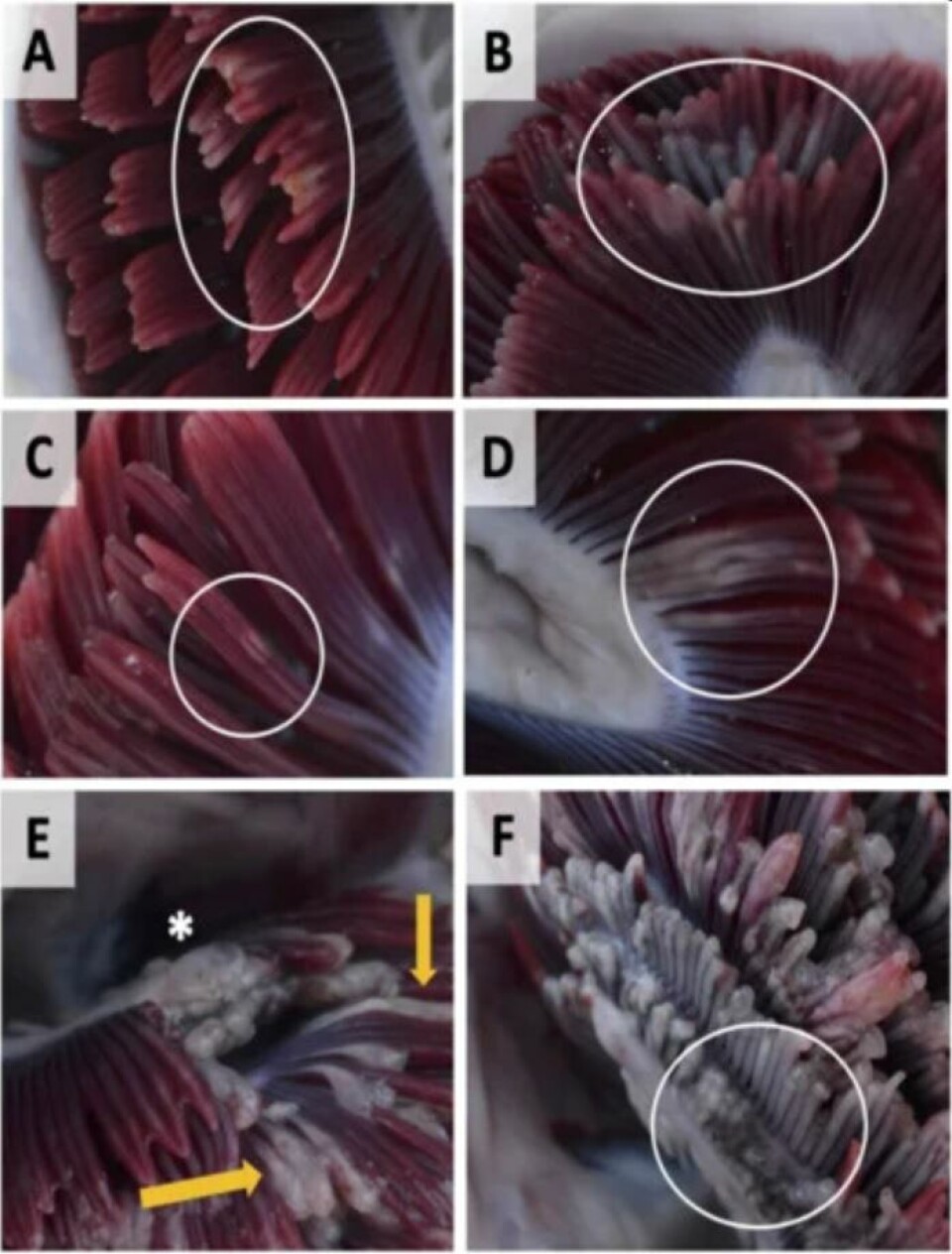
Standardised gill scoring can lead to better fish health
Scientists have developed a standardised gill scoring system which they say can substantially contribute to the development of robust mitigation strategies for amoebic gill disease (AGD) and other gill problems.
The system assesses gross pathological changes in the gill affected by AGD and other types of lesions.
Gill disorders have become more prevalent and widespread in finfish aquaculture in recent years and their aetiology (cause or causes) is often considered to be multifactorial.

Hindered diagnosis
The scientists say effective diagnosis, control and prevention are hindered by the lack of standardised methodologies to characterise the aetiological agents, which produce an array of clinical and pathological presentations.
The aim of their study was to define a novel gross pathological scoring system suitable for field-based macroscopic assessment of complex or multifactorial gill disease in farmed Atlantic salmon, using samples derived from a gill disease outbreak in Cupquelán Fjord, Aysén, Chile.
Clinical assessment of gross gill morphology was performed, and gill samples were collected for qPCR and histology. A novel total gill scoring system was developed, which assesses gross pathological changes combining both the presumptive or healed amoebic gill disease (AGD) and the presence of other types of gill lesions.
Scale of 0-5
The new score classifies pathological changes on a scale of 0 (healthy) to 5 (severe) where 0 equates to “clear and healthy” gills, and 5 to “widespread necrotic patches, extensive melanisation, and almost total destruction of gill architecture due to extensive tissue loss”.
“This scoring system can contribute to the development of robust strategies to mitigate the impacts of complex or multifactorial gill disease on fish health and welfare, and thereby help to prevent serious economic losses,” conclude the scientists, adding that the system provides a non-lethal, practical tool for assessing gill health of affected fish in the field.
The research was undertaken by scientists in the UK, Ireland, the Netherlands and Chile. The lead author is Dr Sophie Fridman of Stirling University’s Institute of Aquaculture.
The study entitled “Assessment of Marine Gill Disease in Farmed Atlantic Salmon (Salmo salar) in Chile Using a Novel Total Gross Gill Scoring System: A Case Study” is published as an open access paper in the journal Microorganisms and can be read here.























































